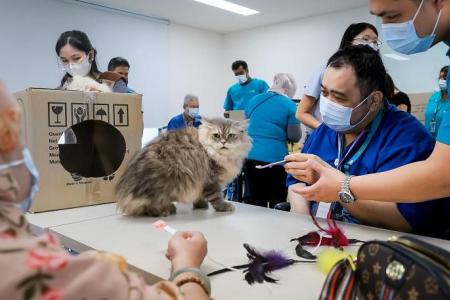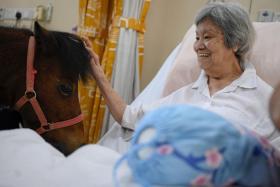Practice makes purrfect: Cats help nursing home residents improve their mobility
Mr Teo Kok Leng is a man of few words, but cats have always liked him.
Last Friday, he sat caressing one and rubbing its ears, as the feline stretched luxuriously.
“I like cats and dogs, they’re very cute,” said the 47-year-old, smiling.
After suffering a stroke, Mr Teo’s right hand is weak, but he can use his left to pet his furry friends.
He is one of the residents at National Trades Union Congress (NTUC) Health Nursing Home (Chai Chee) who got to play with 13 cats, as part of a programme to help improve the residents’ mobility.
Called Purrs for Hearts, the programme was launched at NTUC Health Nursing Home (Jurong West) on June 28.
Organised by art jamming cat cafe Wildflower Studio, the monthly programme guides residents with mobility issues, such as amputees and bed-bound elderly, to feed, carry and play with the cats using toys.
It is being piloted at the two nursing homes till December.
The cats were transported to the centre by Volkswagen Singapore.
Ms Siti Zubaidah, a senior physiotherapist at the Chai Chee home, said that while dogs and horses are frequently used in animal-assisted activities, cats can play a role when residents are afraid of large animals, or are unable to interact with dogs for religious reasons.
Centre director of the Chai Chee home, Mr Jack Sim, said the residents were excited about the session, especially those who used to own or play with cats.
Ms Siti said petting and stroking a cat can improve joint mobility, while lifting and cradling the cats are akin to strengthening exercises carried out in physiotherapy sessions.
Interacting with cats can also offer sensory stimulation, especially for stroke survivors.
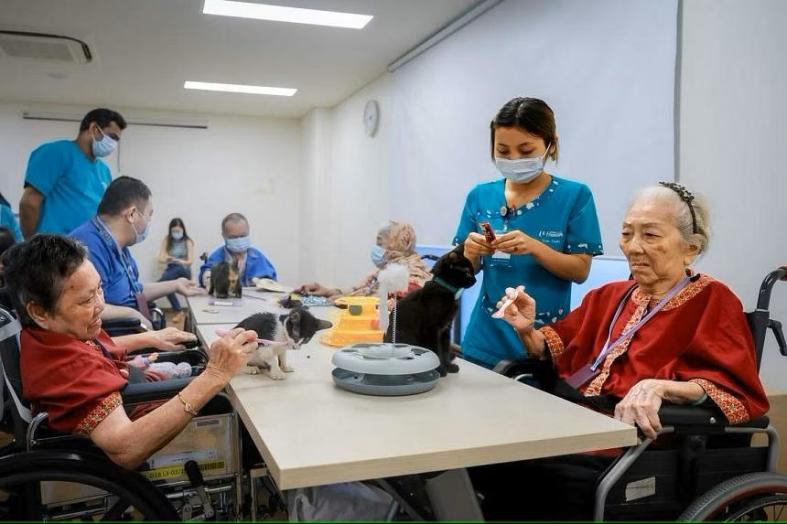
Even when the cats wander around the room, following their movement by moving one’s eyes allows the residents to exercise their eyes and necks. It can also benefit residents who have eye movement disorders due to stroke.
Ms Siti said many of the residents at the home spend their time lying in bed, so interacting with the cats helps those with limited mobility with their fine motor skills, as it motivates them to move, compared with hoops and balls.
When they lean forward to pet the cats, it improves their balance and sitting tolerance.
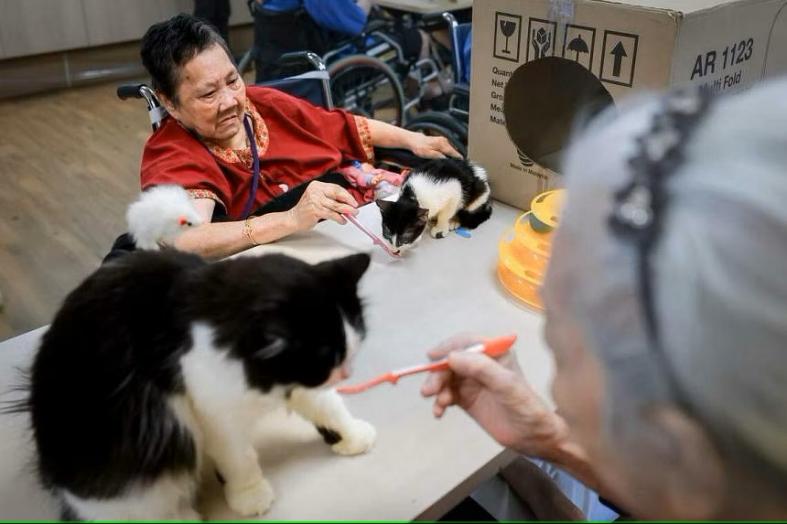
Such activities can involve those who are less mobile and more dependent, and offer them a chance to interact with one another.
Madam Mariam Abdul Hami, who has kidney failure and dementia, used to have four cats, but gave them away to her friend.
After cradling one last Friday, the 80-year-old said: “This one reminds me of my cats, they love to be pampered.”
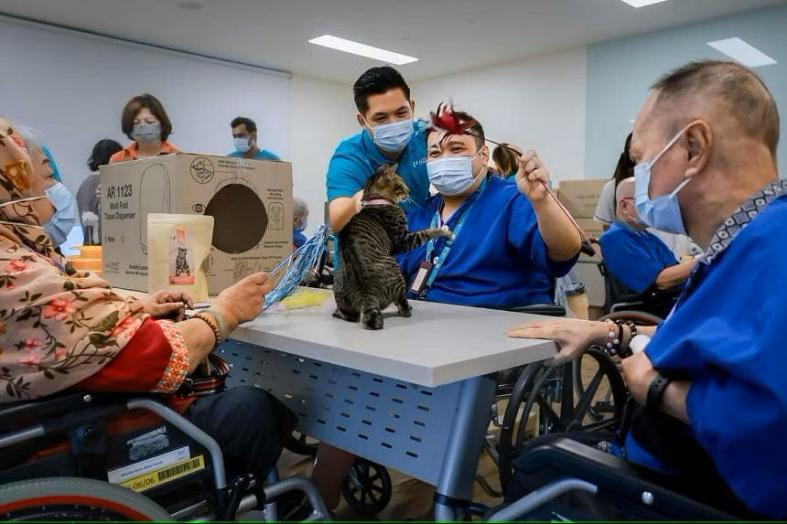
Ms Elsha Loh, 23, a volunteer at the session, had this to say of a resident with dementia: “I was surprised because they told me she won’t understand how to interact with the cats.
“But without being told, she immediately went to feed and pet the cats. It came so naturally to her.”
Get The New Paper on your phone with the free TNP app. Download from the Apple App Store or Google Play Store now

